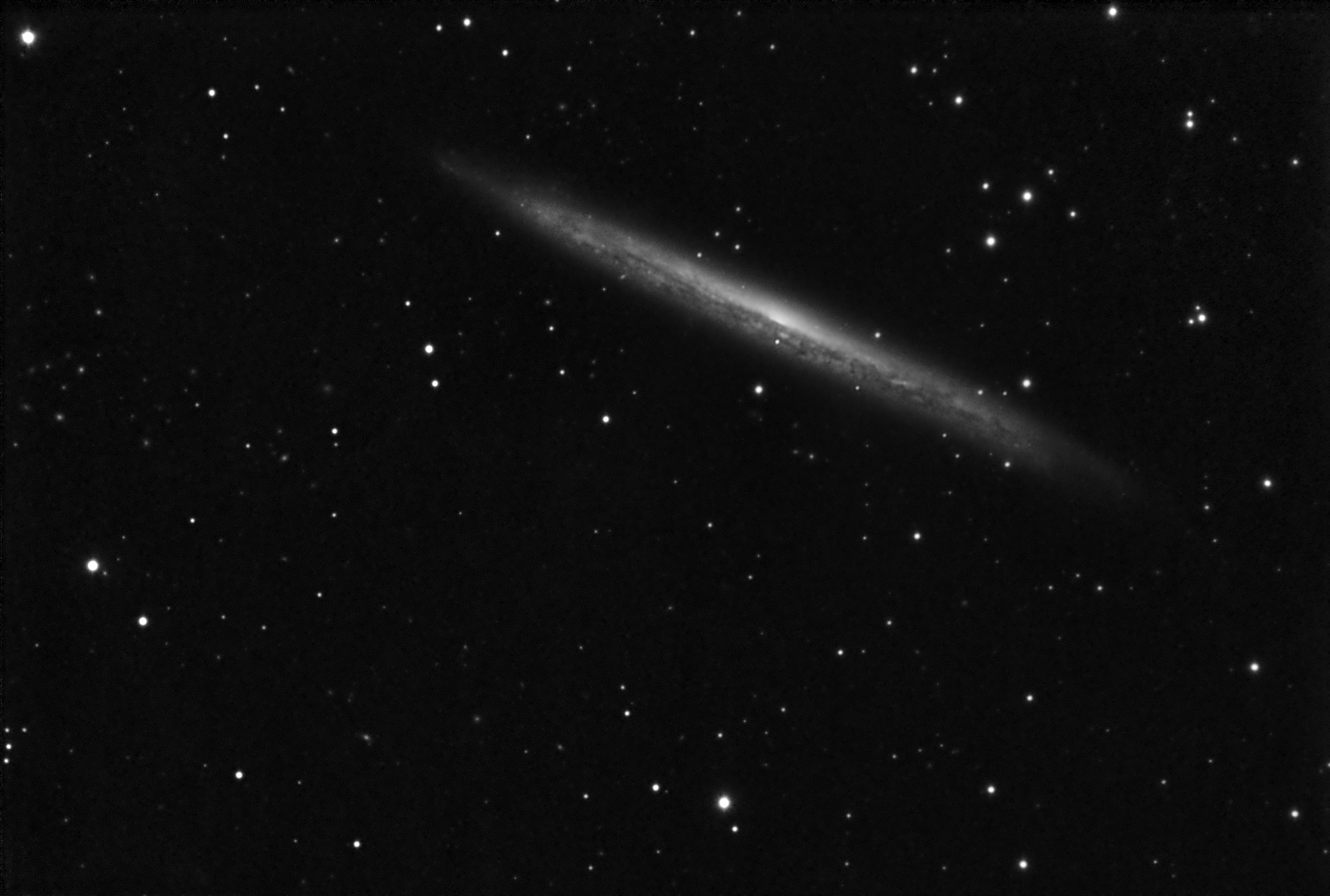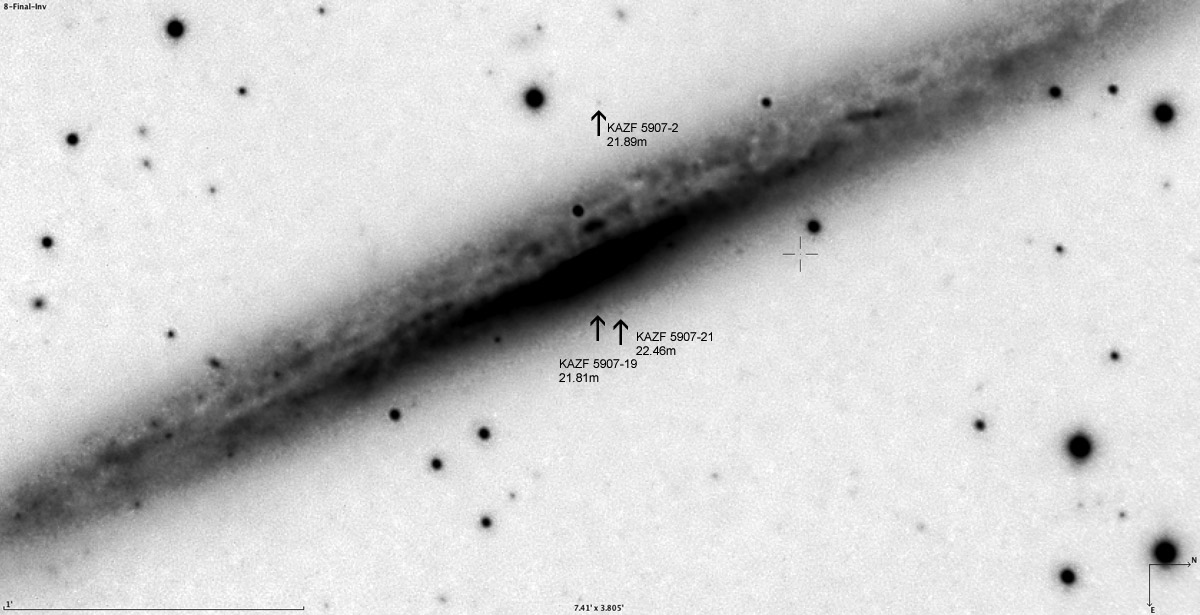
[layout cols=”2-3″ position=”first” textalign=”left”]
Image Data
Telescope: 10″ Aries f/15 Maksutov-Cassegrain on Astro-Physics 900GTO German Equatorial
Accessories: Moravian G1-0300 as Off-Axis Guider, 0.67X Astro-Physics CCD Telecompressor
Focal Length and Resolution: 2692 mm, 0.52″/pixel
Instrument: QSI 532wsg at -20 deg. C
Exposures: 23×5 min
Filter(s): Astrodon Clear
Exposure Date: 10 April, 2011
Seeing, FWHM: 1.9″
Processing Software: MaximDL, CCDStack, PixInsight, Photoshop
Image Acquisition Software: MaximDL, TheSky6, CCDAutoPilot, FocusMax, PinPoint
[/layout]
[layout cols=”1-3″ position=”last” textalign=”left”]
Object Data
Constellation: Draco
Type: Sb+ Galaxy
Distance: 50 Mly
Dimensions: 12.7′ x 1.4′
Magnitude: 11.1 (V)
[/layout]
KAZF Extragalactic Globular Clusters
A few bright globular clusters that are part of the NGC 5907 galaxy have been identified using the Kissler-Patig+Ashman+Zepf+Freeman catalogue and Aladin software. These globular clusters have appeared in the 1999 publication during imaging of NGC 5907 with the Hubble Space Telescope.

SDSS J151556.56+561558.2 Quasar:

Detailed Information on the quasar from NASA/IPAC Extragalactic Database. This quasar has red shift of 1.875 which translates to the following properties:
Light Travel-Time : 9.835 Gyr
Age at Redshift 1.875206 : 3.464 Gyr
Age of Universe : 13.299 Gyr
Processing Procedure
CCDStack:
* Calibrate
* Register
* Normalize
* Stack using Median and Poisson Data Rejection.
PixInsight:
* STF
* Generate mask to fully block bright stars: MASK-1
* Save MASK-1.
* Lucy-Richardson deconvolution to bring galaxy details with MASK-1 – with wavelet regularization to suppress noise.
* Automatic Background Extraction to remove gradient
* Generate mask to block bright stars and bright galaxy core and arms. Do not block noisy galaxy parts. Use cloned input image, blur by removing wavelet layers using A Trous Wavelet Transform then stretch histogram to binarize, save: MASK-2.
* Save MASK-2.
* A Trous Wavelet Transform to reduce background noise (noise reduction on layers 1 to 3) with MASK-2.
* Histogram Stretch
* Fixed dust donut using Dynamic Background Extraction
* Save image: IMAGE-PNG
Photoshop:
* Use IMAGE-PNG to make gradient for corner erosion procedure to repair elongated stars at corners.
* Save gradient to GRADIENT
PixInsight:
* Use GRADIENT as the mask, do erosion to make stars appear round at the corner.
* Save image: IMAGE-1
* A Trous Wavelet Transform to increase sharpness (increase bias and reduce noise on layers 1 to 2) with MASK-2.
* Resize
* Final Histogram stretch
NASA/ADS Query
[wp_nasaads_query_importer_full ads_query_url=”/cgi-bin/basic_connect?qsearch=NGC5907″ max_num_authors=”20″ max_records_to_print=”10″]